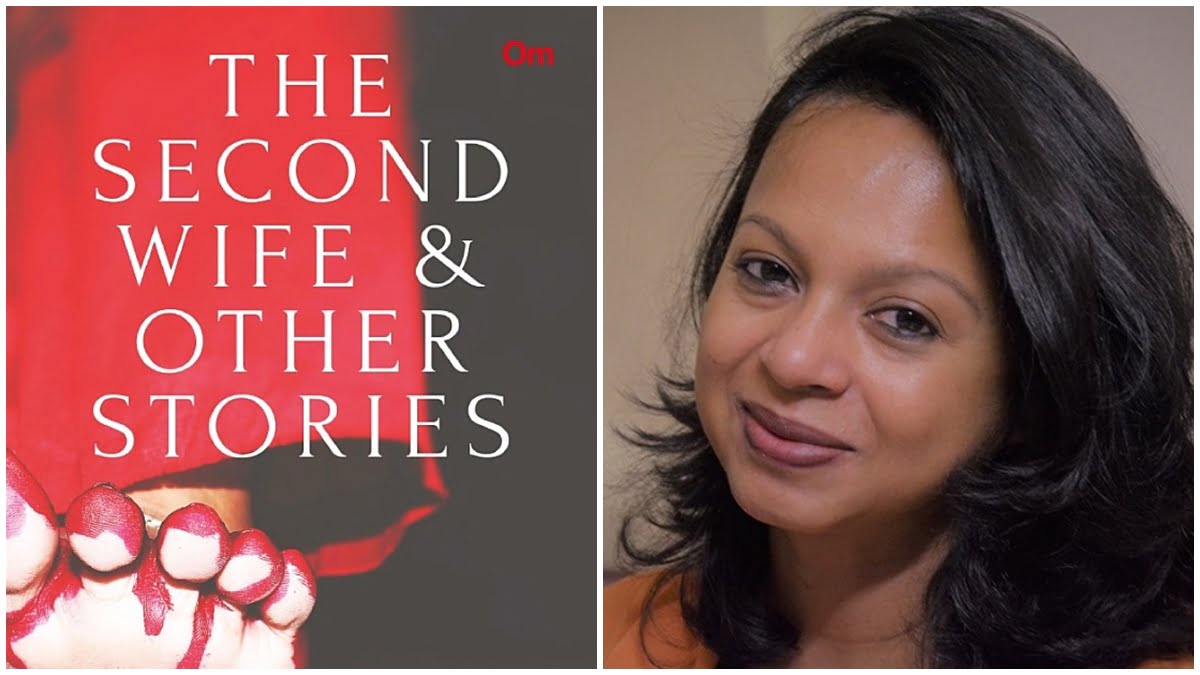What good is a story if it doesn’t shake you and leave you with more questions than answers? Nandini C. Sen’s latest book, The Second Wife and Other Stories (Om Books International, 2022) packs a punch by foregrounding some of the most important yet less discussed and often neglected issues of gender divide, domestic violence, child abuse, child marriage, marital rape, motherhood, casteism, queerphobia, and more.
Sen teaches English in Delhi University and writes on Diaspora Studies, African Studies, and Comparative Literature. Some of her seminal works include The Black Woman Speaks: A Study of Flora Nwapa and Buchi Emecheta, Through the Diasporic Lens, and Mahasweta Devi: Critical Perspectives. Awarded the Ambassador for Peace Prize for her inspiring work toward the education of slum dwellers, Sen is also a recipient of the Charles Wallace Fellowship for Academic Research in London. Her short fiction has appeared in leading literary journals and she has also been featured in the Asian Collective of Short Stories and the Australia-India collaboration titled The Glass Walls.
Also read: Book Review: Erica Mou’s ‘Thirsty Sea’ Is Like Unpacking A Russian Doll
Art Of ‘Golden Repair’
Every tale in this collection highlights the mundane realities of the characters who are broken, vulnerable, defenceless, fragile, and dejected. However, as the stories progress, the extraordinary becomes visible in the quotidian by way of either a tragic event, a shocking revelation, an anti-climactic turn, or an awakening. As realisation dawns, the brokenness is carefully pieced together. The protagonist learns to become ‘whole’ by transforming into a renewed, revitalised, resurrected self that is ready to take on all challenges.
The strive to be ‘whole again’ forms the spine of The Second Wife and Other Stories. It almost seems as if the author is personally invested in each of her character and is pushing her protagonists to discover the philosophy of Kintsugi, the Japanese art of ‘golden repair’ in order to mend what is broken while not losing sight of their own struggles, hardships, imperfections, warts, and bruises. The shards of a claustrophobic past and an imprisoned present are gathered by the survivors in a bid to build a stronger and resilient edifice of a liberated future.
So, be it the ‘demure’, ‘helpless’ Nabonita, who finally decides to teach her rapist a lesson; the submissive and subservient Nira in ‘The Performer’, who challenges patriarchal hegemony and exercises her agency to do what she pleases; or Vinay’s mother in the poignant yet powerful story ‘Lipstick’, who learns to come out of the ‘closet’ of heteronormative rules, toxic masculinity, and gender stereotypes to embrace her son the way he is – these characters experience their rite of passage and repair the wounds of social ignominy by refusing to seek any validation for their choice and decision.
Metamorphosis
The story ‘Lipstick’, for instance, made me recall a particular scene from the 2012 Bengali film, Chitrangada. Rudra, the protagonist, played by Rituparno Ghosh (director of the film) has made up his mind to undergo a gender reassignment surgery and the parents are visibly distressed. Later, during an exchange between the parents, Rudra’s father remarks, “A boy will be like a boy, isn’t that natural?” In response, the mother says, “Nature dictates what is natural. It has its own desire.” On point and remarkably progressive, the mother’s answer exposes the hypocrisy and rigidity of gender binaries and biological determinism. Such an essentialist narrative can only lead to the misrepresentation of a gender-nonconforming individual. Societal norms and conventions tend to legitimise ‘discrimination’ as a necessary punitive measure to ‘rectify’ the ‘difference’ or ‘anomaly’. The ‘difference’ is (mis)read as an aberration. In ‘Lipstick’ too, Vinay’s mother realises, after intervention and introspection, that her son maybe different but that doesn’t become a valid reason to either discriminate against him or belittle his selfhood and subjectivity. The story ends with a prophetic line that reads: “She (Vinay’s mother) had finally dared to come out of the closet.”
Societal norms and conventions tend to legitimise ‘discrimination’ as a necessary punitive measure to ‘rectify’ the ‘difference’ or ‘anomaly’. The ‘difference’ is (mis)read as an aberration. In ‘Lipstick’ too, Vinay’s mother realises, after intervention and introspection, that her son maybe different but that doesn’t become a valid reason to either discriminate against him or belittle his selfhood and subjectivity. The story ends with a prophetic line that reads: “She (Vinay’s mother) had finally dared to come out of the closet.”
Madonna Or Whore?
One of the thematic concerns the author deals with in all its shades and layers is the institution of marriage and how it invariably becomes synonymous with oppression and subjugation for the woman. Within the paradigm of the Madonna-Whore dichotomy or complex, whether it is about the ‘waywardness’ of adolescent girls which must be kept under strict vigil, a family’s honour that is somehow invariably tied to a woman’s sexuality, or a wife’s ‘duty’ to oblige to her husband’s demands without any resistance, Sen deftly reveals that the idea of a ‘free’ and ‘thinking’ woman is almost inconceivable and even threatening in a heteronormative, androcentric, sexist, misogynist, racist, casteist, patriarchal society. But by the end of every story, what ultimately shines through is the solidarity that unites the marginalised and disenfranchised to resist the cruelty of the dominant forces.
This spirit of solidarity and sisterhood is often concealed, veiled, in disguise, and not apparent. The mother in ‘The Second Wife’ illustrates this sentiment. In this story, Bela’s married life resonates with India’s freedom struggle. Even though the mother seems pleased to see her daughter as the mistress of the aristocratic Dutta household in Calcutta, she is aware that both Bela and India share a similar fate. She secretly wishes for her daughter’s liberation and eventually, there is a silver lining and the coloniser is overthrown. Sen’s focus on the inner strength of the battered yet not defeated women is noteworthy. This is evident in the story ‘Deliverance’ too, where the silences exchanged between the mother-daughter duo seethe with rebellion against upper-caste atrocities and male supremacy. The unspoken revolt is unmistakable.
For Our Times
Sen’s stories are purpose-driven, emotive, crisp, and effective. Long after you have turned the last leaf of the book, all the women who populate this sharply-written collection appear once more in front of your eyes, and their zeal to live meaningfully and not just survive mechanically lingers on. The Second Wife and Other Stories is of our times, by our times, for our times.
The Second Wife and Other Stories is available on Amazon.
About the author(s)
With over 10 years’ experience in publishing and journalism, Ipshita Mitra has a Bachelor’s degree in English Literature from Miranda House, DU and holds a PG Diploma in English Journalism from IIMC. She did her MA in Gender and Development Studies and is currently pursuing her PhD in Gender Studies from IGNOU.
She has worked with The Times of India, The Asian Age, The Quint, Om Books International, World Monuments Fund India Association, and The Energy and Resources Institute (TERI). In 2016, her short story ‘Cacophony of Silence’ was published by Nikkei Voice, a Canadian-Japanese newspaper. In 2020, her short story ‘Bohemian Sailor of the Gulf’ was published by Sublunary Editions, a Seattle-based independent publisher. The Indian Quarterly (April–June 2021) published her short fiction, ‘Kabuliwala Returns’. She writes on books, culture, environment, and gender for TerraGreen, The Hindu, Scroll.in, The Wire, Wasafiri, Firstpost, Huffington Post, India Currents, and others. She tweets @ipshita77.





